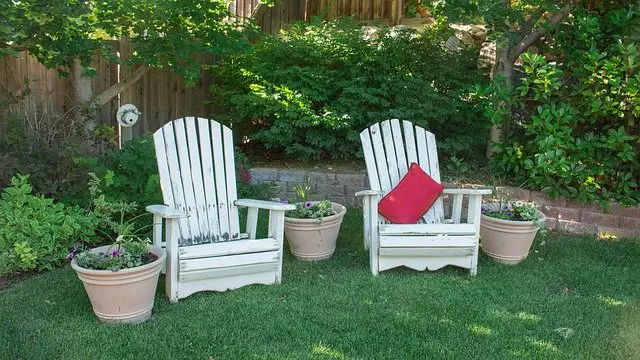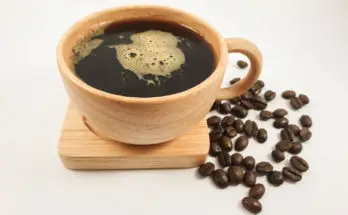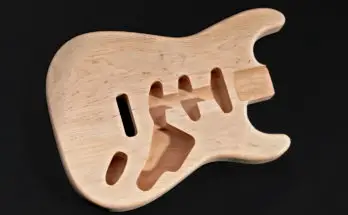Outdoor wooden furniture has its appeal, especially when you enjoy the best of summers in it. Whether you pick up some wooden furniture from a yard sale or decide to set out on your own and build your furniture from scratch, it is essential that you take the time to make sure it’s properly sealed.
As beautiful as wooden furniture looks in your outdoors though, all the weather elements and the wear and tear is bound to destroy the quality of the wood. You will soon end up with a rotten pile of fragments with the speed at which your wooden furniture will deteriorate outdoors.
This is why you need to seal your beautiful furniture before exposing it to the outdoors’ elements.
Outdoor Challenges
Wooden furniture has humongous challenges to face outdoors. Some of them include:
- Fortunately, if you find outdoor wooden furniture for your backyard plans, the life of the wood will be longer. Outdoor wooden furniture generally has a sturdy construction, with thick joints and pieces. This minimizes the wood quantity that will face the elemental threats. However, if you plan to install indoor wood pieces outside, it will be more prone to disintegration, warping, and moisture. Indoor furniture is quite vulnerable comparatively with thin veneers, pieces, and delicate joints.
- Most standard furniture comes together with interior finishes and glues, which suit the controlled-building environments better. If you place the standard wooden furniture outdoors, the glue is bound to come loose in the joints, and the finishing will degrade. It would help if you sealed the said furniture with exterior finishes and waterproof glue to extend the longevity.
- There are only a few resistant wood species, including cedar, redwood, and teak. Apart from these and treated lumber, you will find the nature of all other wood biodegradable. This is why other wood species tend to break down and rot faster. If the outdoor elements can brutally destroy even the rot-resistant and treated quality, you can imagine what it can do to your humble, biodegradable quality.
Best Wood Species For The Outdoors
Your foremost concerns, when choosing wood for the outdoors, are decay resistant and insect damage. However, you must note that no species of wood is 100% foolproof against decay and insect damage. Certain species, such as teak and others, contain natural preservatives that make them rot-resistant, but even they have limitations when serving outdoors.
The three most popular choices to date, for exterior lumber, are:
- Cypress
- Redwood
- Red cedar
However, the cost and availability of these materials varies, depending on the geographical location. You will find the stocks of redwood and red cedar dimensionally stable and typically straight-grained. These two species are also naturally decay-resistant, but both tend to split with driving fasteners.
Additionally, both the species also give a hard time during the painting and fastener using because they bleed tannins. This causes stains to appear around the fasteners, which are visible through the paint too. Proper prepping of the wood will ensure that it accepts all clear finishes and wood stains.
Cypress, too has a conical base and grows in swamps. It is a fine specimen that is actively responsive to finishes, just as cedar and redwood.
The Best Sealers To Use For Wood Finishing
Correct application and the right selection of sealers are critical to getting the perfect finishes. If you make any wrong choices here, you will end up with a finishing disaster or failure. First, you must be aware that seasonal changes influence the moisture content in your wood. This turn has an impact on the durability of the finishes.
Even the direction of the grain, whether flat or edge-grained, has a bearing on the acceptance of the finishes. Wooden surfaces with smooth edge-graining hold varnish and paint better, while flat- grained surfaces are best for penetrating stains.
grained surfaces are best for penetrating stains.
If you aim to enhance the natural grain and color of the wood, you must choose an epoxy sealer of exterior varnish and oil. An epoxy sealer having a topcoat exterior varnish is also a great choice. My go to choice for sealing outdoor furniture is made by a company called Seal Once. You can find their product here (Amazon Link). It goes on very well and I’ve had furniture last for years with just a single coat of it. It is a bit pricey, but it’s worth it in my opinion because the upkeep is minimal.
If you’re working with an excessively labor-intensive and durable natural wood, you will need three epoxy coats for the finishing, with an additional topcoat of exterior varnish. The varnish exterior provides a gleaming bright finishing, whereas the epoxy extends a moisture barrier to your wood, protecting it against shrinking and swelling.
Oil finishes do not last beyond a year, but they are the easiest to apply. Many oil stains can soak in protecting the wood against mildew, mold, and even UV rays. You can find them in a variety of colors, but you must prepare for the yearlong life they will live in.
If you have the luxury of time and patience, you may also opt for the exterior varnishes that provide a natural wood finish. Polyurethanes are also a good choice as they last longer and offer better protection, but then again are time-consuming to apply.
Step-By-Step Process OF Sealing Wood
Here is a guide to help you seal your outdoor wood pieces:
- It would help if you began by prepping the wood with sandpaper to remove imperfections and signs of previous treatment. It is essential to sand down the surface with rough sandpaper to tackle the obstacles.
- Then use finer sandpaper to smooth and even out the surface as best as you can. Wipe the thoroughly to remove sanding residues.
- You must then select your sealant and stain as per your application needs. These are available according to specific applications, such as furniture sealant, deck sealant, and fence sealant. We suggest using a marine wood sealant to toughen your wood against water damage, UV rays, and humidity. However, if you are more in favor of a wood stain, then be sure to select one suited for exterior use.
- Apply your stain or sealant with sprayer or brush. Make sure your application is even and allow it to dry for approximately 4 to 10 hours, as per product instructions.
- If yours is a sealant that requires another sanding for the next coat to stick better, use a 0000 steel wool or fine sandpaper. Then use a dry cloth to wipe the surface in preparation for the next coat.
- Put the second coat on your wooden piece and allow it to dry completely. The second coat will take longer to dry, so you need to be patient. Finely sand once more and then apply the third and the last coat.
- It is best to allow your sealed wooden furniture to cure for approximately three days before you use it.
How Long Can Wood Last Without Sealing
There are no definite measures to show how long wood can last outdoors when you don’t seal it due to many variables. Several experts claim that two by fours or untreated dimensional lumber can  live soundly for approximately two years before it begins rotting, while others believe it lasts even longer.
live soundly for approximately two years before it begins rotting, while others believe it lasts even longer.
The best way to predict how well an untreated 2×4 will serve you is to analyze the application and the amount of sun and weather exposure it will have to endure. Generally, untreated species of wood prove to have very little resistance to decay, and under constant exposure to the outdoor elements, they will lose their vitality in a short period. Sunlight itself can rob wood of its natural oils. Thus you can figure out how the wood’s lifespan will shorten when it is outdoors permanently.
Final Thoughts
Wood, being a porous material, possesses a high tendency to absorb water and sustain damage. Damage from humidity rainwater tends to make the wood warp, peel off, swell and even rot over time. This makes it imperative to seal your wood so that you can maximize the life of outdoor furniture, fencing, and deck. Neglecting to seal your outdoor wood will have you searching for outdoor furniture replacement at the end of each humid summer.




